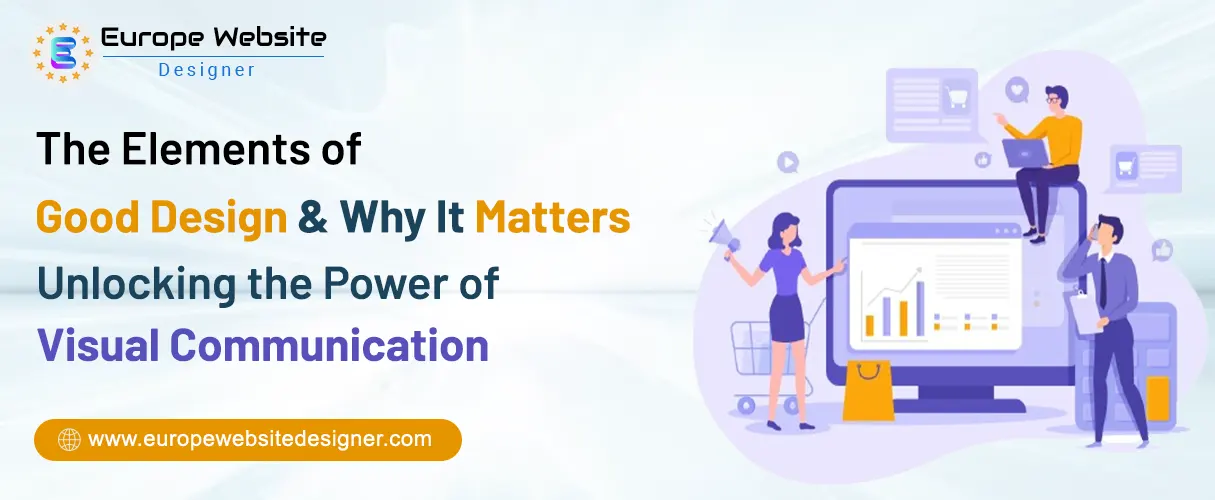
Introduction:
Design is an integral part of our daily lives, influencing how we perceive and interact with the world around us. Whether it’s the layout of a website, the packaging of a product, or the aesthetics of an advertisement, design plays a crucial role in capturing attention, conveying messages, and shaping user experiences. At the core of effective design lie the elements that create harmony, balance, and visual appeal.
We will explore the key elements of good design and delve into why it matters in various aspects of our lives.
1. Color:
Color is a powerful element that can evoke emotions, convey meaning, and create visual interest. Understanding color theory and its psychological effects enable designers to make intentional choices that align with the desired message or brand identity. Warm colors like red and orange can evoke feelings of energy and excitement, while cool colors like blue and green may create a sense of calm or trust. The careful selection and combination of colors can greatly impact the overall look and feel of a design, influencing how it is perceived and remembered.
2. Typography:
Typography encompasses the selection, arrangement, and style of fonts in design. It plays a vital role in enhancing readability, conveying hierarchy, and capturing the intended tone. The choice of fonts should align with the brand’s personality and the message it wants to communicate. Serif fonts may convey tradition and elegance, while sans-serif fonts tend to appear modern and clean. Designers carefully consider factors such as font size, spacing, and line height to ensure legibility and visual harmony.
3. Layout and Composition:
The layout and composition refer to how visual elements are arranged within a design. A well-executed layout guides the viewer’s eye, creates visual hierarchy, and organizes information effectively. Techniques such as grid systems, alignment, and white space management help achieve balance and coherence. A balanced composition ensures that elements are harmoniously distributed, while asymmetry can create visual interest and dynamic tension. A thoughtful layout and composition improve the user experience, making information easily digestible and enhancing the overall aesthetic appeal.
4. Contrast:
Contrast refers to the juxtaposition of different elements to create visual impact and emphasize key content. Contrast can be achieved through variations in color, size, shape, texture, or typography. By using contrast effectively, designers can draw attention to important elements, improve readability, and create a sense of visual hierarchy. Well-executed contrast helps guide the viewer’s focus, making the design more engaging and memorable.
5. Imagery and Visuals:
Images and visuals are powerful tools that can communicate ideas, evoke emotions, and enhance storytelling. The careful selection and placement of relevant and high-quality visuals can greatly enhance the effectiveness of a design. Whether it’s photographs, illustrations, icons, or infographics, visuals can capture attention, convey complex concepts, and create a connection with the audience. They add depth, context, and personality to the design, making it more engaging and relatable.
Why Good Design Matters:
1. Communication and Engagement:
Good design facilitates effective communication by visually conveying messages in a clear and compelling manner. It captures attention, engages the audience, and communicates information efficiently, leading to better comprehension and retention.
2. User Experience:
Design influences how users interact with products, services, and interfaces. Intuitive and user-centered design improves usability, enhances satisfaction, and encourages positive experiences. Aesthetically pleasing and well-structured designs create a delightful user journey.
3. Brand Identity:
Design plays a pivotal role in shaping brand perception and identity. Consistent and visually appealing branding builds trust, establishes recognition, and differentiates a brand from its competitors. It conveys professionalism, attention to detail, and quality.
4. Emotional Connection:
Good design has the power to evoke emotions, create a connection, and influence behavior. Thoughtful design choices can trigger positive emotions, resonate with the audience, and drive engagement or action.
5. Competitive Advantage:
In today’s visually-driven world, good design sets businesses apart from the competition. Well-designed products, websites, and marketing materials stand out, attract customers, and leave a lasting impression. Design can be a key factor in gaining a competitive edge.
Conclusion:
Good design is not merely about aesthetics; it is a powerful tool for effective communication, user experience, and brand differentiation. By understanding and utilizing the elements of good design, designers can create visually compelling, engaging, and impactful experiences. The careful consideration of color, typography, layout, contrast, and imagery helps capture attention, convey messages, and foster emotional connections. Whether in digital interfaces, print materials, or physical products, the power of good design is undeniable. It enhances our daily interactions, influences our decisions, and shapes our perception of the world around us.
Tags: Looking For UI Designer In India, Looking For UX Designer In India, Looking For AI Designer In India, Looking For Designing Team In India, UI UX AI Dev Team, Hire Web Designers In India, Looking For Web Development Company, Cross Platform Apps, Web Designing Company, Connect Infosoft Technologies
